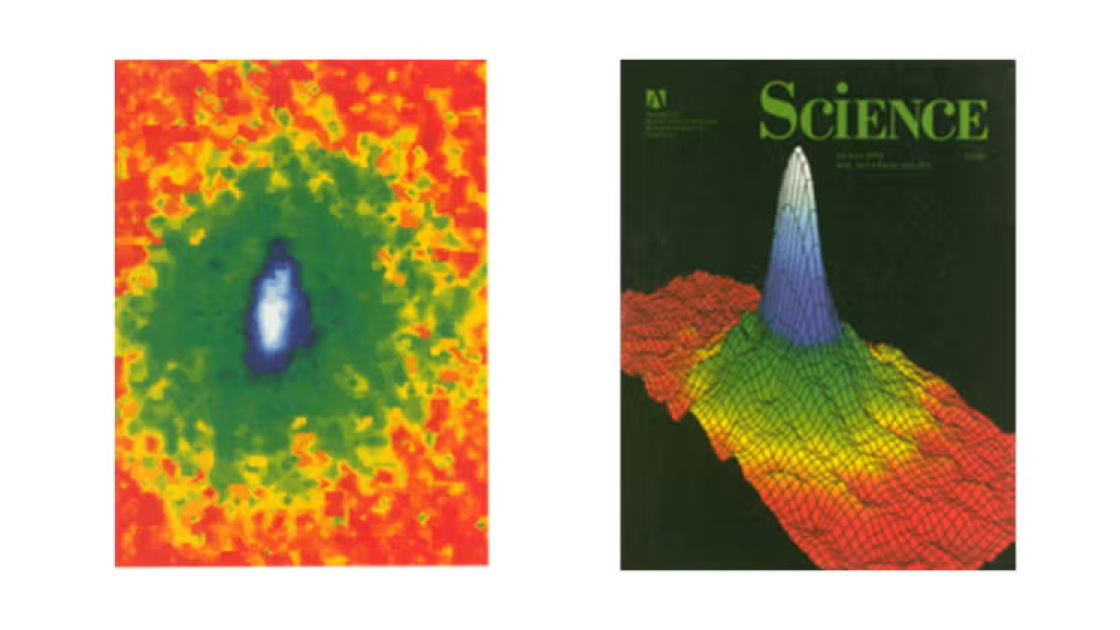The first Bose-Einstein Condensate (BEC) was first created by Eric Cornell, Carl Wieman, Mike Anderson, Jason Ensher, and Michael Matthews on June 5, 1995 in JILA at the University of Colorado Boulder. This new state of matter was first predicted 70 years earlier. Satyendra Nath Bose first described the quantum statistics of what we now call bosons, and Albert Einstein extended the theory to show that non-interacting bosons could condense into a single macroscopic quantum state at low temperature.
The group used a magneto-optical trap to cool and trap about 100,000 atoms of 87Rb, then evaporatively cooled the gas to 170 nanokelvin at which point most of the atoms condensed into the harmonic oscillator ground state of the trap. They measured the temperature and condensation by releasing the atoms by shutting off the magnetic field and allowing the pinhead-sized clump to expand ballistically for a few milliseconds. A laser pulse tuned to the resonant frequency illuminated the growing blob, and the resulting shadow was captured on CCD camera, measuring the momentum distribution of the atoms (figure below left). The data converted to a 3D representation (figure below right) shows that the blue-labeled atoms are in the asymmetric harmonic oscillator ground state, with the remainder in a symmetric gaussian whose width measures the temperature. The group immediately recognized the significance of their discovery, quietly confirmed the experimental results, and wrote and submitted the paper to Science. Their paper was published on July 14, 1995, with the cover image showing the BEC. Their discovery culminated decades of research by many physicists aimed at creating a BEC.




